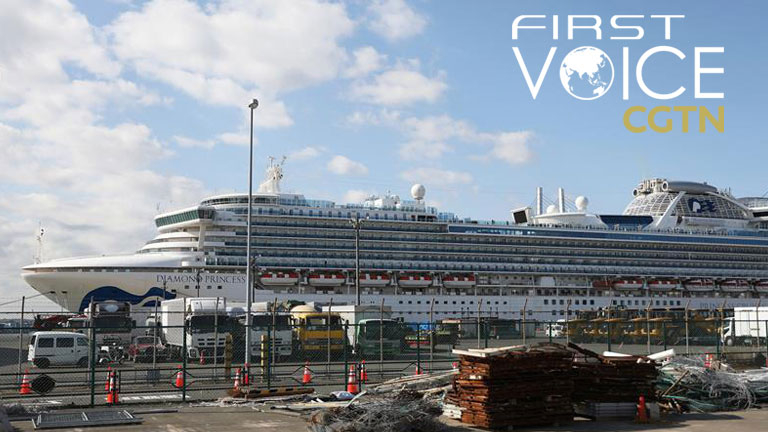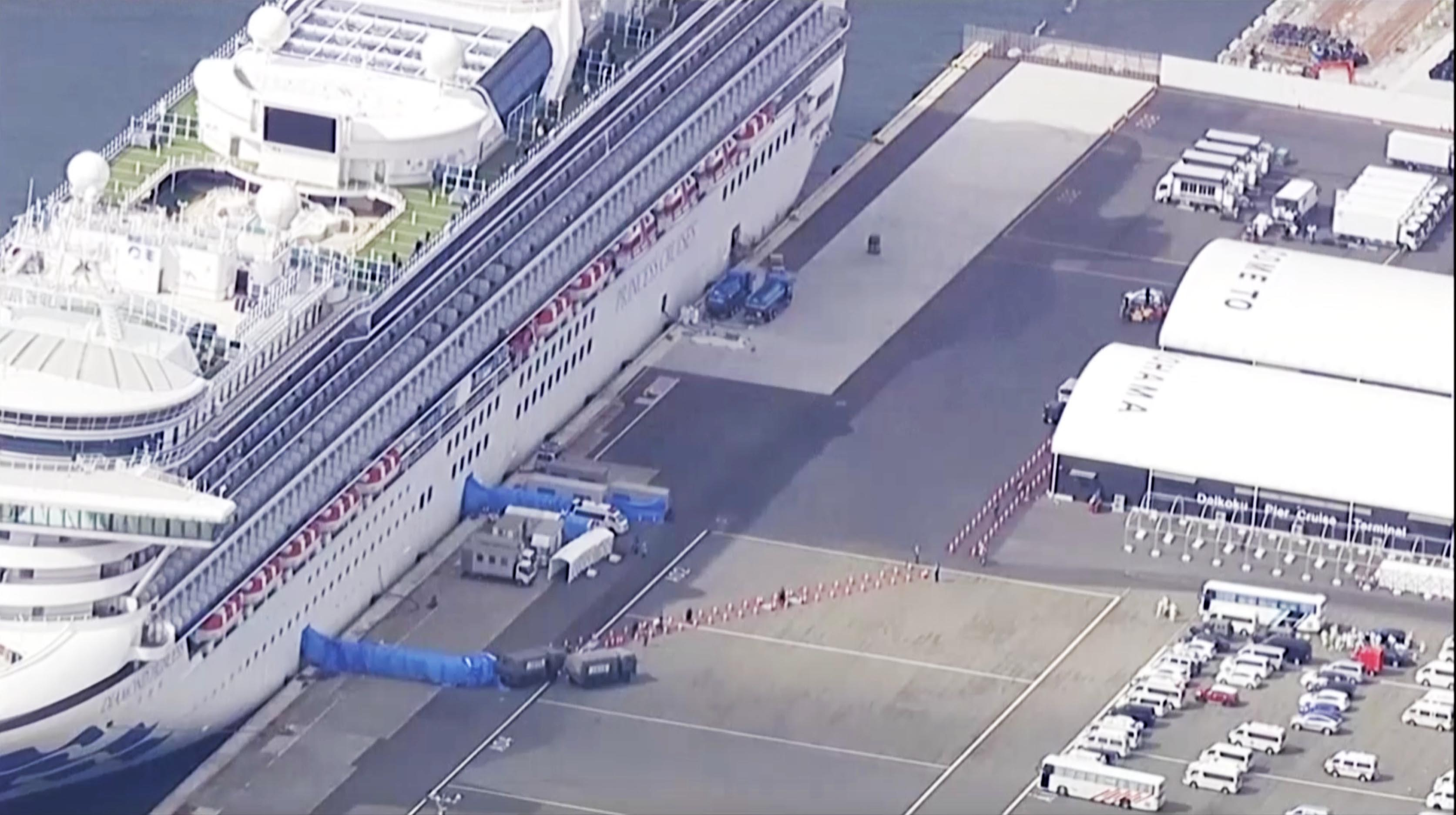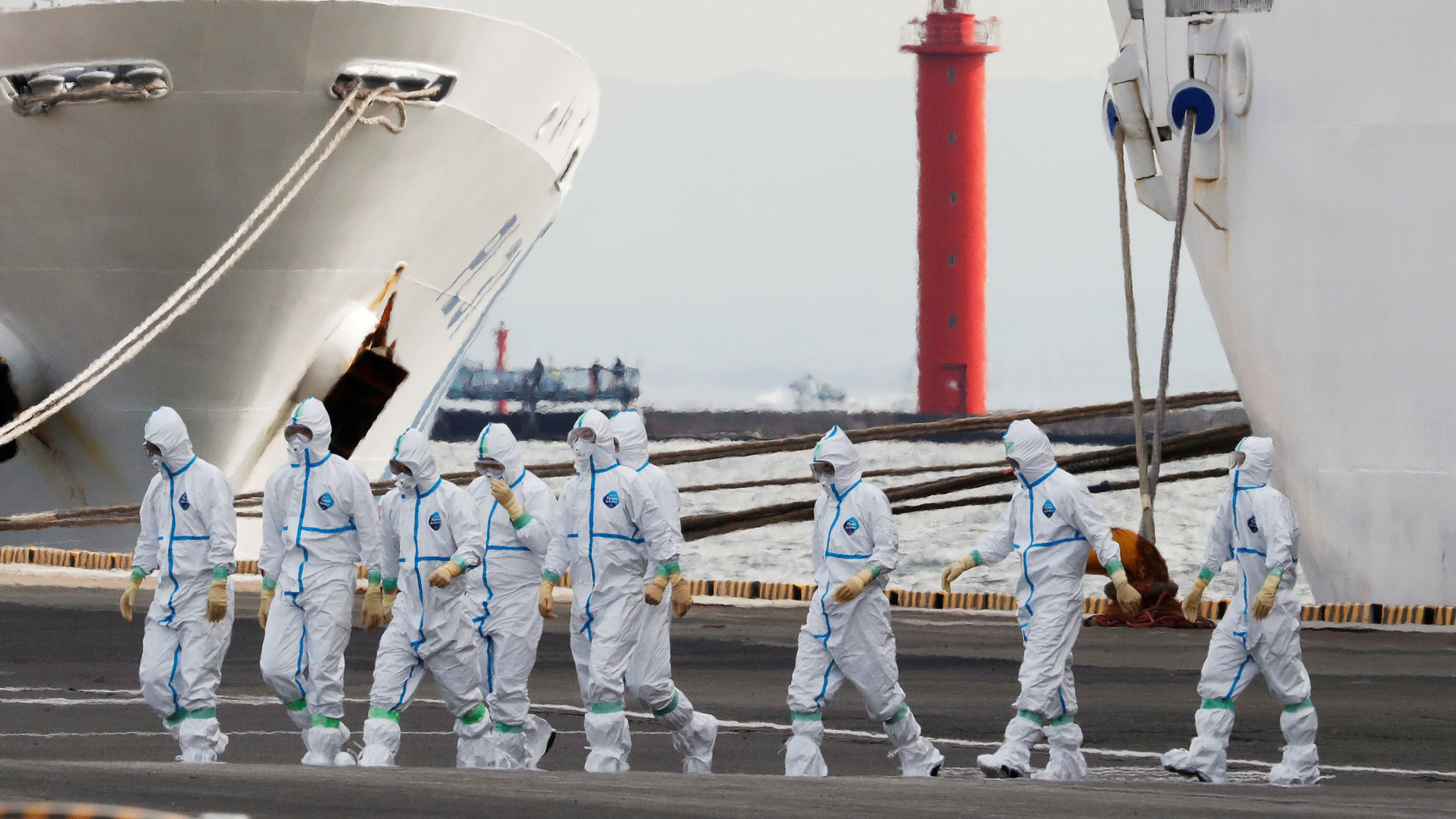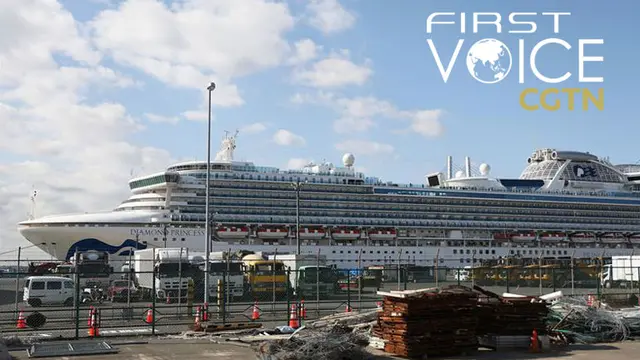
Editor's note: CGTN's First Voice provides instant commentary on breaking stories. The daily column clarifies emerging issues and better defines the news agenda, offering a Chinese perspective on the latest global events.
On February 17, the United States started repatriating its citizens from the
Diamond Princess
, a cruise ship quarantined at the Yokohama harbor in Japan for the past two weeks and have seen a spike in the number of COVID-19 cases.
What has been motivating recent controversy is the fact that, towards the last minutes of boarding the charter flight home, 14 of the Americans evacuated tested positive for the virus. Instead of taking them into quarantine, the U.S. decided to separate the infected ones from those who are healthy and transport them in different sections of the same plane.
U.S. President Donald Trump, whom most people assumed to be aware and have approved the action, was caught off guard. According to Washington Post's reporting on February 22, Trump only learned of the decision post-facto. Based on the article, Trump was "angry that he wasn't consulted first, complaining that the decision could damage his administration's handling of the response."
Whether the act would really hurt the administration's measures against the virus is not under being discussed here. But, this episode does reveal the complexity and the disorderly nature of government operations at a time of crisis. Americans often pat themselves on the back for having the best governance system in the world. And yet, that system just saw an Assistant Secretary to the U.S. Department of Health and Human Services and an Executive Director at the Department of State deciding an important public health and national security issue without informing or consulting their president – not to mention that he should be the one making such a consequential choice. Even Trump's Acting Chief of Staff, Mick Mulvaney, is reported to have said that the president "had to know of such proposed moves in advance going forward."

A snapshot of the video showing the evacuation preparations near the Diamond Princess. /CGTN
One could argue that the U.S. lucked out this time, that it had made preparations, and the impact could be minimal without the president weighing in. But, it should be realized that the consequence of bad luck is something way above the pay grade of an assistant secretary and an executive director. Decisions made at lower levels of government could cause cracks in the defense against the disease. The U.S. Centers for Disease Control and Prevention (CDC) already warned on February 21 that shutting down schools and businesses, if COVID-19 starts to widely spread in the U.S, is a possibility.
It should also be kept in mind that U.S. evacuation plans are based on more than a month of analysis of the disease and observation of other countries' responses. U.S. officials are saying that the plane was well-equipped for handling infected personnel, and they have made contingency plans for such cases. But even then, it seems risky since the Diamond Princess has one of the largest concentrations of COVID-19 cases, second only to China. And besides, the plan still runs the risk of exposing the evacuees to infection.
In the State Department's special briefing on February 17, Executive Director William Walters was very clear that the test results for 14 people came when these people were already on the bus. "If those results had come back four hours earlier…it would have been a different discussion," he said. CDC's principal deputy director, Anne Schuchat, as reported by the Washington Post, argued against such an action and said that the government had promised to the evacuees that no infected or symptomatic person would be evacuated with them. And yet, CDC's objection had to give way because these people have already been "evacuees within an evacuation system," said Director Walters, and they need to proceed with the action in accordance with the protocol.

Workers wearing protective gear near the cruise ship Diamond Princess in Yokohama, Japan. /Reuters
And what did the protocol entail? Washington Post reports the protocol involved evacuees being "forced to wait, in the port, for more than two hours" in buses with the "windows covered." If these are the conditions under which the infected and the healthy evacuees were forced into, then it is reasonable to presume that the chance of getting infected is not remote, to say the least.
Measures of quarantine have been implemented in China and other countries at various levels. And it is self-evident that only quarantine above a certain level works in this crisis. The recent drop in COVID-19 cases in China has been largely attributed to the fact that cities are shut down, citizens are asked to minimize their outdoor activities, and businesses are paused to avoid large gatherings. The U.S. is well aware that it can't handle an outbreak on its soil. The Washington Post has reported that administration officials are worried that the U.S. "might not be able to quarantine large numbers of people."
And given the evacuation procedure carried out for Diamond Princess, it is natural to doubt to U.S.' ability to mobilize the entire nation and quarantine an entire major metropolis within a mere few days while ensuring the flow of necessary supplies and social stability. Lessons really ought to be learnt from the Diamond Princess evacuation. One can claim superiority, but even superiority has to bow in the face of progress and proven capability.
Script writer: Huang Jiyuan
(If you want to contribute and have specific expertise, please contact us at [email protected].)
 简体中文
简体中文

